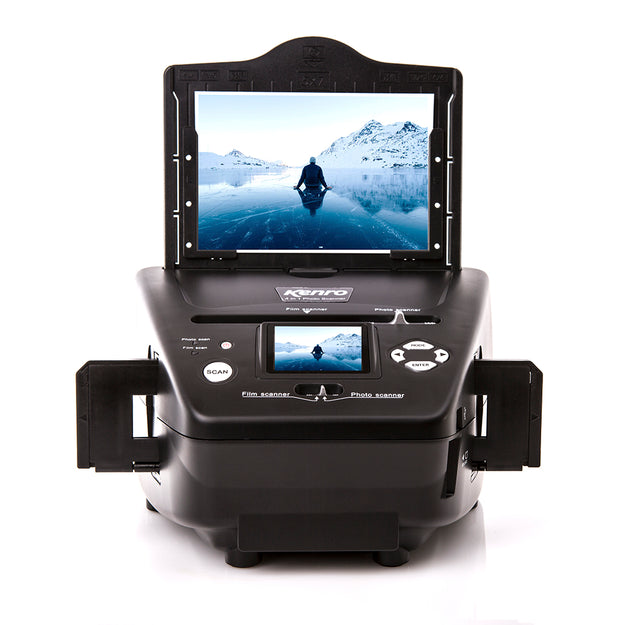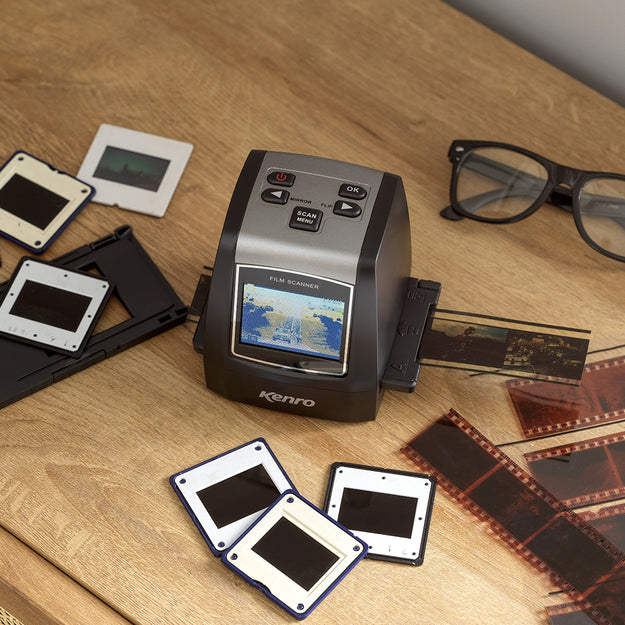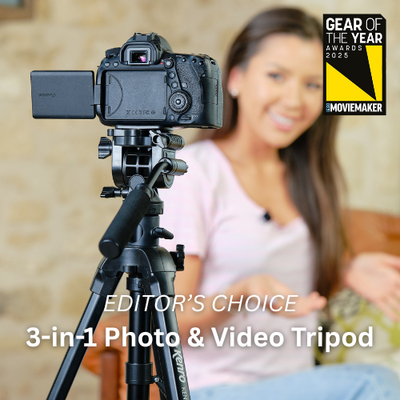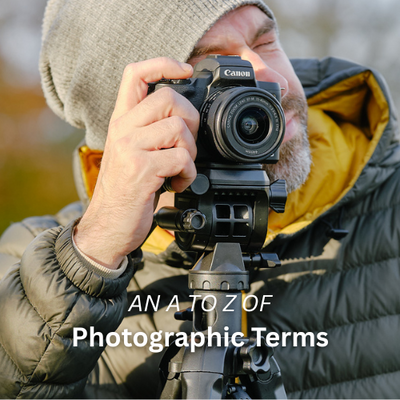In the age of digital convenience, there’s something timeless about the nostalgia of film photography. Whether you’re holding onto a collection of cherished family slides, vintage 35mm negatives, or taking up film photography as a hobby, transferring these moments into digital form helps to preserve these memories. As film negatives naturally deteriorate over time, investing in a photo scanner helps to ensure they’re not lost to fading colours or physical damage.
From compact, entry-level models to professional-grade devices, whether you’re looking for resolution and colour accuracy or speed and format compatibility, in this guide we compare the range of scanners available to help you make an informed decision. At Kenro, we understand the importance of protecting your photographic history and are here to walk you through the key features to consider when selecting a film and slide scanner. Read on to discover the best options available and our helpful tips for getting the highest quality digital results from your original film and slide collections.
Can I scan negatives at home?
Yes, scanning negatives at home is simple and a more cost-effective way of digitising your images without relying on a professional service. This is the most accessible way for photography enthusiasts and hobbyists to efficiently digitise old negatives without needing a professional lab. All you need is a good-quality film and slide scanner that is compatible with your computer. These scanners usually come with dedicated film holders and backlit panels to properly illuminate the film for the most efficient scanning.
Depending on what type of negatives you are working with, there are scanner options for 35mm, 110, 126, and even Super 8 film. All of these scanners come with user-friendly software that helps invert the negative image into a positive digital file whilst also adjusting colour balance, and removing any dust or scratches, to give you the highest quality digital image.
What is the best scanner for scanning photos?
If you’re searching for a simple way to preserve and digitise your images at home, investing in a high-quality scanner can help you to easily convert these images into a JPG format ready for you to then edit, enhance, share and print. The best scanner for you will depend on the size of your images, your intended use and the resolution you are looking for.
For an entry-level scanner that is straightforward for scanning 35mm images, this Kenro Film Scanner is perfect. Simply connect via USB to your computer, install the software and start scanning. This scanner also has the capability to connect to your TV to view images that way, as well as on the built in LED screen. If you’re looking for something more high-tech for large archival projects or professional use, this Kenro 4-in-1 Scanner Film, Slide & Photo Scanner not only allows you to scan film but also gives you the option to view them before digitising, so you can enhance and edit to breathe new life into your images.

Kenro 4-in-1 Scanner Film, Slide & Photo Scanner

Depending on your budget and how many images you are scanning, there are many different options available here at Kenro. Below is a comparison of the various film scanners and slide viewers we have on offer, as well as what features they each have, so you can decide which one is most compatible with your scanning requirements.
|
£119.99 KNSC201 |
£189.95 KNSC201 |
£99.95 KNSC302 |
£30.99 KNSVX3 |
£17.99 KNSVX2 |
£27.99 KNSL01 |
|
Size (mm) 87x86.5x102.5 |
Size (mm) 175x112 x113 |
Size (mm) 235x208x147 |
Magnification 3x zoom |
Magnification 2x zoom |
Size (mm) 158x150x14 |
|
Weight 250g |
Weight 510g |
Weight 809g |
Film/Slide Size 35mm |
Film/Slide Size 35mm |
Weight 240g |
|
Function Scanner / USB MSDC |
Function Scanner |
Function Scanner |
Light Source 6500K LED |
Light Source LED |
Function Light Panel |
|
Image Sensor 14.0MP |
Image Sensor 1/ 3.06” 14MP |
Sensor 8MP |
Colour Temp 5000K +/- 270K |
||
|
Resolution 14MP / 22MP interpolated |
Resolution 16MP interpolated |
Viewing Area 5x4" |
|||
|
Film Type 135mm, 126KPK, 110, Super8, Monochrome, 35mm |
Film Type 50x50mm slides, colour negative film, black and white film |
Film Range 51.5mm F/NO=4 f=3.93 Photos - 170mm |
Light Source LED
|
What resolution should I scan old slides at?
The resolution you choose to scan your images at will all depend on what film format you’re working with and what you're planning to do with those images once scanned - will you be mainly viewing and sharing digitally, archiving or printing the images?
The recommended scanning resolution for 35mm film will vary depending on what it is used for. If you are scanning in 35mm film for use on social media or to print as a smaller image, a 2400 dpi resolution is fine, whereas if you’re looking to print in a medium format, 3200 is recommended to give you more detail. For larger copies of this image, a 4000 dpi or higher is ideal.
For medium format film (120/220), a 1200-2400 dpi is recommended for digital use, or if you’re looking to create good quality prints up to 16x20”, a 2400-3200 dpi is preferred. Anything larger than that, a 3200-4000 dpi will be ideal. Keep in mind that the higher the resolution you’re scanning at, the longer the process will take, and the more storage it will take up on your computer.
Preserve your memories with Kenro
Whether you’re digitising a box of old slides, undertaking a major archive project, or scanning in your recent film photos for digital use, we’ve got a range of scanners to help preserve your favourite moments. Browse through our full collection of film and slides photo scanners to find the right fit for you to enjoy and share these images for years to come.



